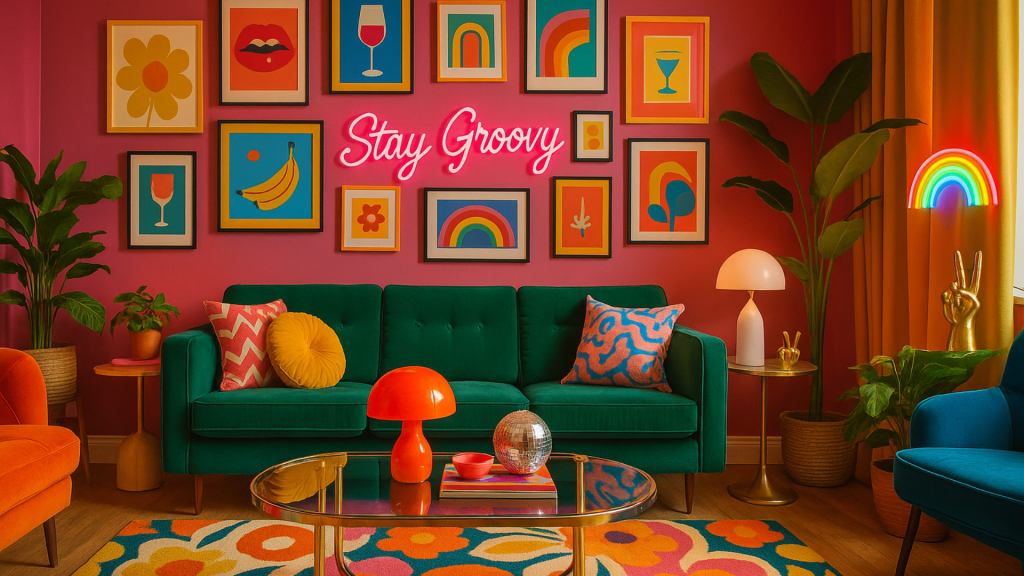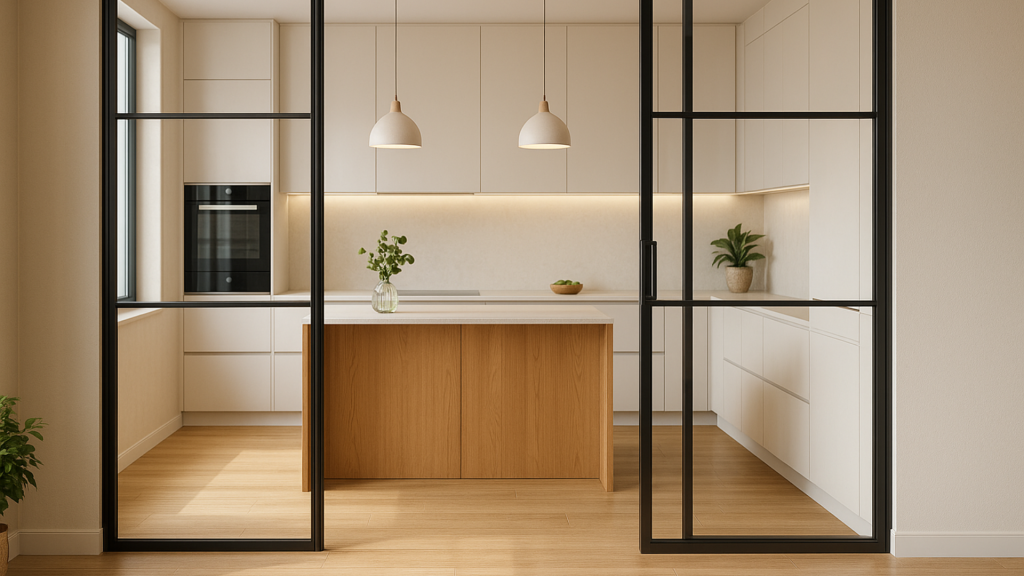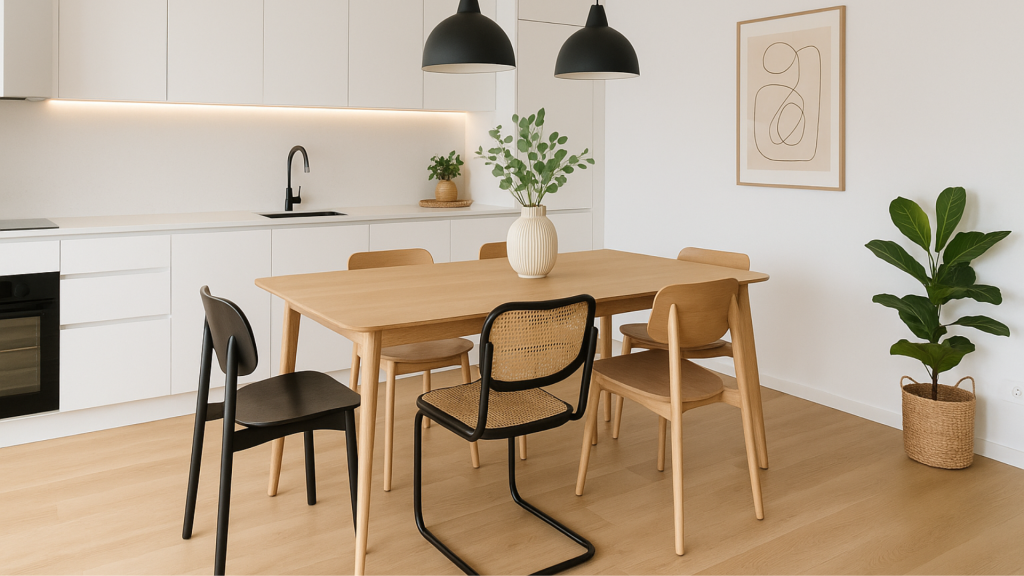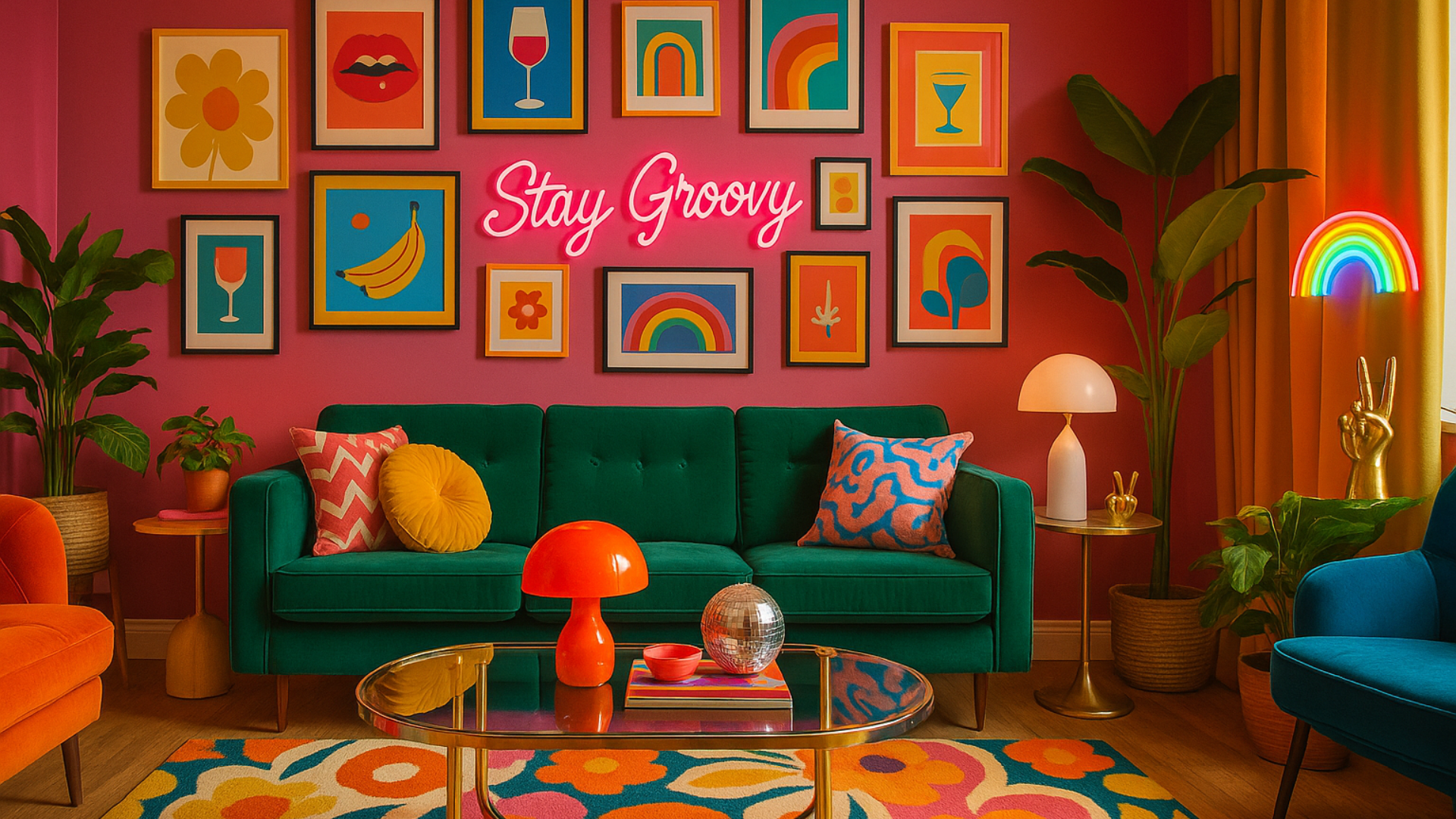
Kitsch style interior decoration
Kitsch interior design divides opinion; however, when it is planned judiciously, it is a powerful, fun and deeply personal language. In this article, we'll explain what it is, how to bring it home without going overboard and, above all, how to do it tastefully.
What is kitsch in interior design?
Before jumping into buying neon lamps or vintage porcelain, it's a good idea to establish definitions. When we talk about kitsch style, we are referring to an approach that mixes objects of high and low cultural value without complexes: from pop art to tourist souvenirs, retro furniture, new pieces with a nostalgic aesthetic and, of course, an intense colour palette. However, it is not chaos without rules: success comes when we select, we edit and we compose.
Why kitsch decorating style seduces today:
- Because it allows us to express identity without asking permission.
- Because it relativises the solemnity of "good taste" and replaces it with "proper taste".
- Because, well measured, it turns a home into a memorable experience.
In short, kitsch decoration is an emotional aesthetic; and, paradoxically enough, it requires method to make it work.
The principles of kitsch-style interior decoration
To keep kitsch from becoming visual noise, we apply four simple principles:
- Visual hierarchy
We arrange the room by planes: background (walls and large pieces), middle (main furniture) and front (objects, art, lamps). The intensity increases from back to front. This allows the eye to travel through the room without fatigue. - Conscious repetition
We intentionally repeat colours, materials or motifs. If we put bubblegum pink on a poster, we repeat it on a cushion, a lamp or a border; the whole is "anchored". - Calibrated contrast
The kitsch decorative style works with contrasts: gloss/matt, plain/stamped, pop/classic. But every contrast needs visual rest around it, like a breathing musical solo. - Humour and quality
Yes to humour and irony; no to poor quality that breaks down in weeks. We can mix a souvenir with a well-upholstered armchair: friction is what makes us smile.
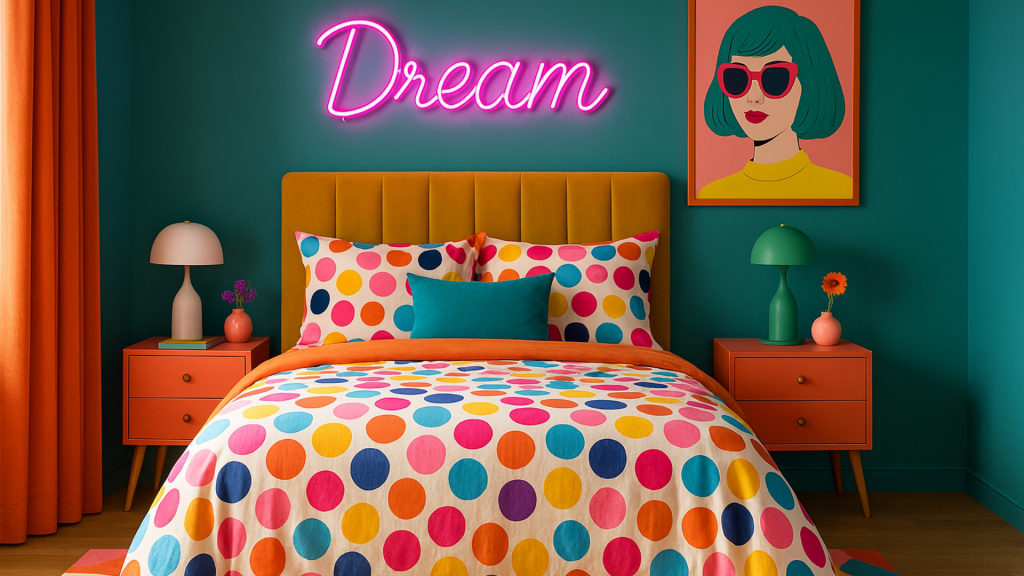
Kitsch colour palette, materials and textures
Chromatic energy is the fuel of the kitsch style of interior decoration.
- Warm neutral base: bone, cream or taupe for walls and large upholstery.
- Main colours: fuchsia, turquoise, lemon, acid green, pop orange... in light doses.
- Metal and gloss: brass, chrome, high gloss lacquers, methacrylate and rounded mirrors.
Materials that fit:
- Woods with visible grain (from mid-century to natural oak).
- Textiles with weft (velvet, bouclé, chenille) to give "weight" to the ensemble.
- Quality plastics, methacrylates and polished metal parts provide sparkle.
Pro tip: when you are afraid of "going overboard", reduce one supporting colour and multiply the texture. Texture sophisticates kitsch.
Kitsch style in living room decoration
- Star wall
One wall can be wallpapered with retro geometrics or a saturated colour. Next to it, serene walls are restful. - Anchor sofa
We prefer a mid-tone sofa (bottle green, petrol blue) and multicoloured cushions with two-tone repetition. - Art and objects
We combined pop prints, "classic" gilt frames and a humorous piece (a mirror in the shape of a cloud, for example). The key: grouping by visual families.
Kitsch style in bedroom decoration
- Headboard protagonist
Upholstered with velvet or high gloss lacquer capitonné. - Bedside tables and lamps
Likely mix: vintage bedside tables with globe lamps. - Textile
Plain bedspread + patterned cushions repeating two of the colours of the headboard.
Kitsch style in kitchen decoration
- Kitchen front
Fish scale" or metre tile in saturated colour; brass handles. - Dining room
mismatched chairs, though twinned by colour; a small neon lamp declaring a winking phrase.
Kitsch style in bathroom decoration
- Two-colour tile with "improbable" border.
- Mirror with gilt or pastel frame.
- Chrome towel rails and a kitsch piece (an eccentric vase) as a finishing touch.
Examples of combinations in kitsch style
- Bottle green sofa + strawberry pink and cream cushions + marble coffee table + chrome globe lamp + pop print with typography.
- Mustard lacquered sideboard + gold mirror with organic shape + blown glass vases in gradient + discreet animal print rug.
- Bedroom with lilac velvet headboard + vintage wooden bedside tables + metal mushroom lamps + paintings in a series of pastel colours.
In all cases, we are back to the rule: one "jewel" piece, two repeated colours and textures that contain the shine.
What they say about us
Publicado enTrustindex verifica que la fuente original de la reseña sea Google. me recomendaron Tarraula, una inmobiliaria para la decoración de un apartamento que había comprado en Javea. Al principio tienes miedo si te van a acertar los gustos, vas con muchas inseguridades, pero la verdad que fueron muy amables y prudentes a la hora de indicarte, me deje aconsejar por Cristina y no podemos estar mas agradecidos, el apartamento a quedado de revista ESPECTACULAR, tanto interior como exterior la mesa y las sillas de jardín, todo el que entra en el apartamento se queda encantado. Si volviese a realizar otro proyecto no dudaría en volverlos a llamar. Muchas, muchas Gracias a todo el equipo. Esperanza y VicentePublicado enTrustindex verifica que la fuente original de la reseña sea Google. Quedé muy contento con la decoración de mi casa, son muy profesionales, atentos y puntuales en todo. Tienen mucha variedad y te asesoran muy bien. Estuve en varias tiendas de la zona y nada que ver, totalmente recomendable.Publicado enTrustindex verifica que la fuente original de la reseña sea Google. Cristina and her team are a pleasure to work with. From just an initial meeting Cristina understood how we wanted to furnish our new home and came up with lots of ideas that suited our taste perfectly. She is very creative and spotted opportunities that we would never have seen. She has an amazing attention to detail. The furnishings are excellent quality but the team are always open to suggesting alternatives to fit with a given budget.Publicado enTrustindex verifica que la fuente original de la reseña sea Google. Wir haben Cristina, ihr Team und ihre Firma Tarraula aufgrund der Empfehlung unseres Bauträgers kennengelernt, als wir 2021 angefangen haben ein Haus in Javea zu bauen. Sie und Elisa standen uns von Anfang an zur Seite um unser neues Heim zu gestalten. Es zeichnet Cristina aus, dass sie genau zuhört und so ein Gespür dafür bekommt wie man sein Haus einrichten möchte. Auf Grundlage dieser Gespräche erstellt sie verschiedene Alternativen zu den unterschiedlichen Räumen die es zu möblieren gilt. Gemeinsam entscheidet man sich dann für die beste Idee. Cristina ist jederzeit offen für Anregungen die man selber einbringt. Das Handling, die Lieferung und der Aufbau der Möbel und der Dekoration nach der Planungsphase ist professionell und punktgenau. Alle Mitarbeiter sind freundlich und führen die Arbeiten sehr gut aus. Alles in allem eine großartige Erfahrung mit der wir so nicht gerechnet hatten. Unser Haus ist exakt so geworden wie wir es uns immer erträumt hatten. Vielen Dank an Cristina, Elisa und alle im Team.Publicado enTrustindex verifica que la fuente original de la reseña sea Google. Todo lo que hago en casa es siempre con Tarraula. Cristina siempre nos da las mejores soluciones y más creativas, tiene un gusto exquisito y estamos súper contentos con sus propuestas de decoración. Muchas gracias.Publicado enTrustindex verifica que la fuente original de la reseña sea Google. Botiga 100% recomanable. Un tracte increïble, s'adapten al teu estil i mobles de molta qualitat. Hem quedat molt contents amb el resultat i el servici. Repetirem.

